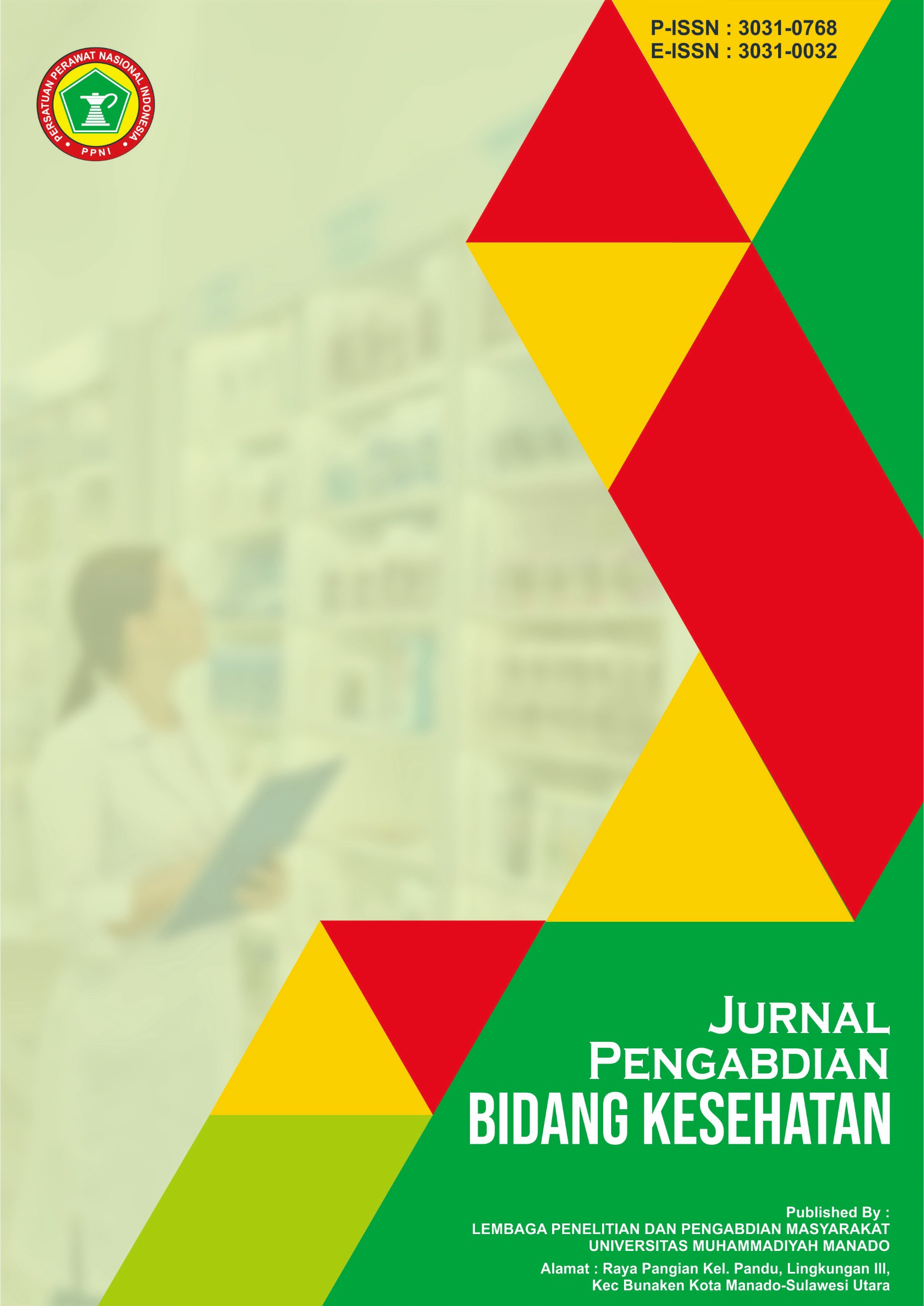Pemberdayaan Ibu dan Keluarga melalui Media Leaflet untuk Mencegah Stunting dengan Meningkatkan Pengetahuan Gizi dan Pengelolaan Pendapatan Rumah Tangga
DOI:
https://doi.org/10.57214/jpbidkes.v3i2.201Keywords:
Stunting, Nutrition Education, Income Management, Leaflets, Mother EmpowermentAbstract
Stunting is a chronic nutritional issue that significantly affects children's long-term growth and development. One of its primary causes is the lack of knowledge among mothers and families about balanced nutrition and the skills to manage household income effectively. This community engagement program aimed to enhance the knowledge of mothers and families through leaflet-based education on child nutrition and household income management for stunting prevention.The activity was conducted in the working area of Puruk Cahu Public Health Center, Central Kalimantan, involving 30 housewives with children under five years old. The education was delivered through lectures using both leaflet and PowerPoint media, and the implementation consisted of three stages: preparation, implementation, and evaluation. The results showed that empowering mothers and families through leaflet media is an effective educational strategy. After the intervention, participants showed a significant improvement in understanding the importance of early nutritional intake, the concept of balanced nutrition, and simple strategies for managing household finances to meet their children's nutritional needs. In addition, participants became more aware of the family's active role in ensuring quality food consumption for children and the long-term impacts of malnutrition.It is expected that this increased knowledge will enable mothers and families to become agents of change in preventing stunting and fostering an environment that supports optimal child growth and development.
References
Bappenas. (2022). Strategi nasional percepatan pencegahan stunting 2020–2024. Jakarta: Bappenas.
Bass, B. M., & Riggio, R. E. (2006). Transformational leadership (2nd ed.). Mahwah, NJ: Lawrence Erlbaum Associates.
Damayanti, R. (2020). Perubahan perilaku ibu dalam praktik gizi seimbang pasca edukasi. Jurnal Gizi dan Kesehatan, 12(2), 145–154.
Departemen Kesehatan RI. (2018). Pedoman pencegahan stunting. Jakarta: Dirjen Kesmas.
Dinas Kesehatan Kabupaten Murung Raya. (2023). Laporan kesehatan wilayah Puskesmas Puruk Cahu tahun 2023. Puruk Cahu: Dinas Kesehatan Kab. Murung Raya.
Freire, P. (1970). Pedagogy of the oppressed. New York: Continuum.
Gillespie, S., Haddad, L., Mannar, V., Menon, P., & Nisbett, N. (2013). The politics of reducing malnutrition: Building commitment and accelerating progress. The Lancet, 382(9891), 552–569. https://doi.org/10.1016/S0140-6736(13)60842-9
Hakimi, M., & Lestari, P. (2021). Peer support groups in community nutrition. Jurnal Kesehatan Masyarakat, 9(1), 34–40.
Kementerian Kesehatan Republik Indonesia. (2022). Survei status gizi Indonesia (SSGI) tahun 2022. Jakarta: Kemenkes RI.
Kementerian Kesehatan RI. (2022). Profil kesehatan Indonesia tahun 2022. Jakarta: Kemenkes RI.
Kementerian Kesehatan RI. (2023). Petunjuk teknis media edukasi gizi seimbang. Jakarta: Kemenkes.
Kusnadi, D. (2020). Peran ayah dalam praktik gizi anak. Jurnal Keluarga Sehat, 4(1), 22–28.
Mefalopulos, P. (2008). Development communication sourcebook: Broadening the boundaries of communication. Washington, DC: World Bank.
Nasution, M. (2020). Pemberdayaan masyarakat dan transformasi sosial. Jakarta: Prenada Media.
Notoatmodjo, S. (2012). Promosi kesehatan dan ilmu perilaku. Jakarta: Rineka Cipta.
Puskesmas Puruk Cahu. (2024). Laporan tahunan kegiatan posyandu dan edukasi gizi tahun 2024. Puruk Cahu.
Rifkin, S. B. (2014). Examining the links between community participation and health outcomes: A review of the literature. Health Policy and Planning, 29(Suppl_2), ii98–ii106. https://doi.org/10.1093/heapol/czu076
Rogers, E. M. (2003). Diffusion of innovations (5th ed.). New York: Free Press.
Soekirman. (2013). Ilmu gizi dan aplikasinya untuk mahasiswa dan profesional. Jakarta: Dian Rakyat.
Suharto, E. (2005). Pembangunan masyarakat dan pemberdayaan masyarakat. Bandung: PT Refika Aditama.
UNICEF. (2019). Improving young children’s diets during the complementary feeding period. New York: UNICEF.
UNICEF. (2021). Preventing stunting: Why it matters and what it takes. New York: UNICEF.
WHO. (2020). Nutrition landscape information system (NLiS) country profile indicators: Interpretation guide. Geneva: World Health Organization.
World Bank. (2021). Nutrition-smart investment for economic development. Washington, DC: World Bank Group.
World Health Organization. (2013). Nutrition-sensitive interventions and programmes: How can they help to accelerate progress in improving maternal and child nutrition? Geneva: WHO.
Yuliana, S. (2021). Dampak intervensi edukasi terhadap kemandirian keluarga dalam pencegahan stunting. Jurnal Gizi Indonesia, 10(1), 55–63.
Downloads
Published
How to Cite
Issue
Section
License
Copyright (c) 2025 Jurnal Pengabdian Bidang Kesehatan

This work is licensed under a Creative Commons Attribution-ShareAlike 4.0 International License.







